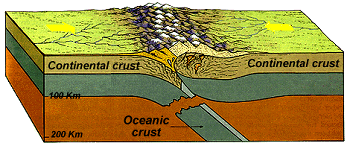I’ve always thought that change was inevitable in life. Yet a significant part of me is a control freak who is very fond of at least the illusion that I have some input into my fate. I did not like the visual of myself as a leaf blown hither and yon by the uncaring winds of destiny.
I decided to make a practice, a habit, of changing BEFORE a crisis forces me to change. In this way I feel that I can have some impact on the direction and speed of change. Change, then, can occur in a more measured, leisurely fashion, at a pace I am more comfortable with.
I visualize change as two continental tectonic plates coming into oppositional contact. They grind against each other, tremendous forces in play (the past and the future, the old and the new). One plate can slowly slide above the other (change before a crisis forces change) or the plates can remain in direct conflict, tension building to a crescendo of destructive earthquakes (change only when forced to).

To guide change requires some wisdom to anticipate the possible direction of the forces of change/crisis that may impact your life. No one has a crystal ball, but I’m reminded of Gen. George Patton’s statement, “Plans are useless. Planning is invaluable.” The best-laid plans rarely survive contact with the reality of the next dawn. But if we have diligently gone through the planning process (thought through alternatives, created options, explored various probability paths), we are much more able to adapt on the fly.
These are the tools and techniques by which I seek “change of choice” before a crisis forces unguided change:
- A deep commitment to life-long learning
- A sincere desire to seek and understand other viewpoints
- Affirmations on flexibility, adaptability, and timely letting go
- Strong personality traits of resilience and curiosity


0 Comments